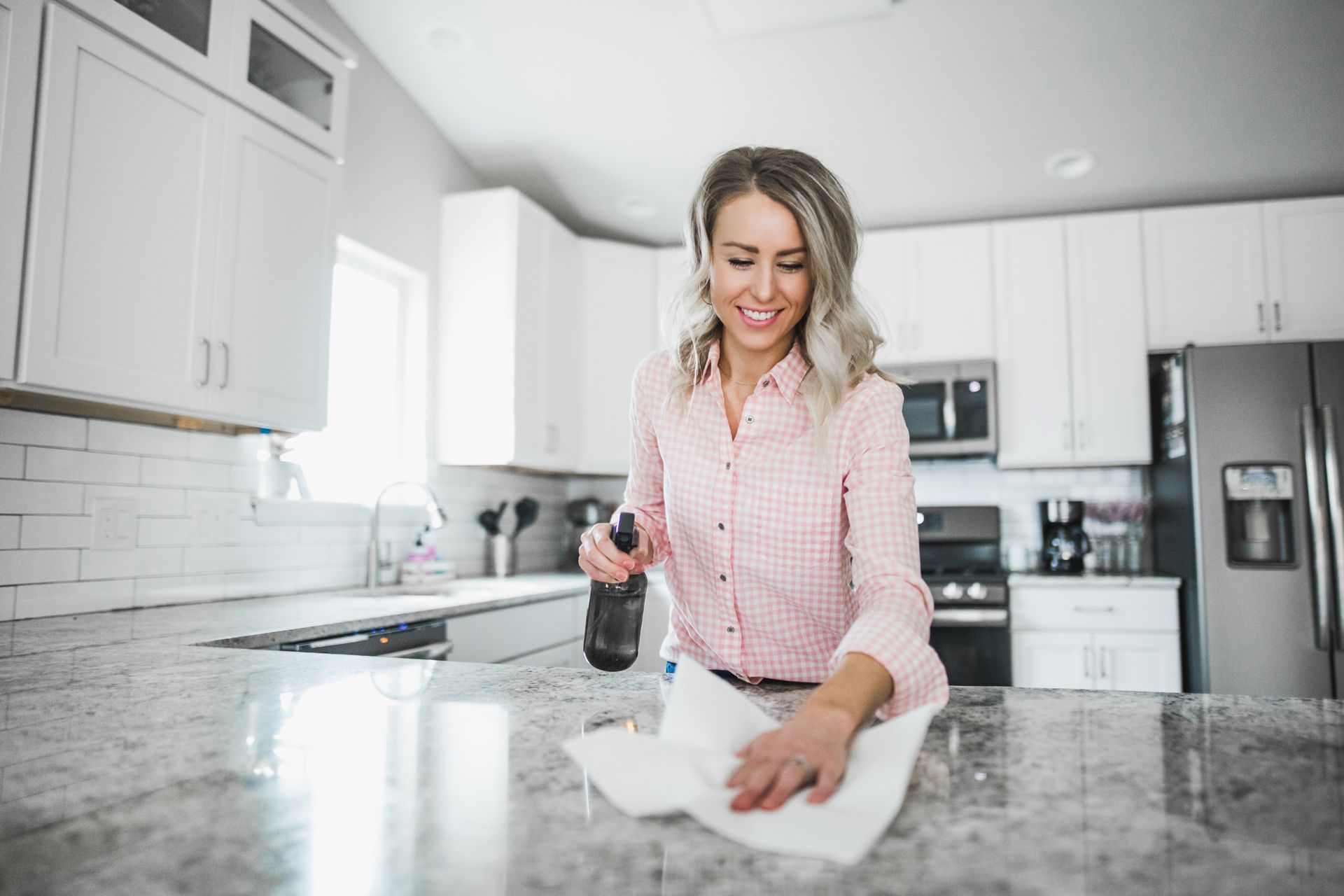Natural stone surfaces, such as marble, granite, limestone, and travertine, add elegance and sophistication to any space. However, improper cleaning techniques can damage, dull, and deteriorate these beautiful surfaces. In this article, we'll highlight some of the most common mistakes people make when cleaning natural stone and provide tips on avoiding them, ensuring your stone surfaces retain their beauty and longevity.
Using Acidic or Abrasive Cleaners
One of the most significant mistakes people make when cleaning natural stone is using acidic or abrasive cleaners. Substances like vinegar, lemon juice, or ammonia-based cleaners can etch and damage the surface of certain types of stone, especially marble and limestone. Similarly, abrasive cleaners or scrubbing pads can scratch and dull the surface, detracting from its natural beauty.
Tip: Opt for pH-neutral, non-abrasive cleaners specifically formulated for natural stone. These gentle cleansers effectively remove dirt and grime without harming the surface. Additionally, soft cloths or brushes are used to clean the stone to avoid scratching it.
Neglecting to Seal the Stone
Failure to seal natural stone surfaces leaves them vulnerable to stains, moisture penetration, and other forms of damage. Many people overlook the importance of sealing, assuming that the stone is naturally resistant to stains and spills. However, even the most durable stones benefit from regular sealing to maintain their protective barrier.
Tip: Seal your natural stone surfaces regularly using a high-quality stone sealer recommended by professionals. Follow the manufacturer's instructions for application and reapplication intervals to ensure maximum protection against stains and moisture.
Using Excessive Water
Excess water during cleaning can seep into natural stone pores, causing discoloration, staining, and even structural damage over time. Some homeowners mistakenly believe that soaking the stone with water will help loosen dirt and grime, which can lead to undesirable consequences.
Tip:
Use minimal water when cleaning natural stone surfaces. Dampen a soft cloth or mop with water and a mild stone cleaner, then gently wipe the surface to remove dirt and stains. Immediately dry the surface with a clean cloth to prevent water from penetrating the stone.
Ignoring Regular Maintenance
Neglecting regular maintenance of natural stone surfaces can accumulate dirt, grime, and stains, detracting from their appearance and longevity. Many people wait until their stone surfaces are visibly dirty or damaged before taking action, exacerbating cleaning challenges and leading to more extensive restoration efforts.
Tip: Establish a regular cleaning and maintenance routine for natural stone surfaces. Sweep or dust the surfaces daily to remove debris and prevent scratches. Wipe up spills promptly to prevent staining, and clean the surfaces weekly or as needed using gentle cleaning solutions and techniques.
Using Improper Cleaning Tools
Using inappropriate cleaning tools, such as harsh brushes, scouring pads, or abrasive cleaning agents, can cause irreparable damage to natural stone surfaces. Rough materials can scratch, etch, or dull the surface, compromising its integrity and appearance.
Tip:
Choose cleaning tools specifically designed for natural stone, such as soft-bristled brushes, microfiber cloths, or natural sponge pads. Avoid abrasive materials that can scratch or damage the surface, and always test new cleaning products or tools in an inconspicuous area before using them on the entire surface.
Conclusion
Cleaning natural stone surfaces requires care, attention to detail, and appropriate cleaning techniques and products. By avoiding common mistakes such as using acidic cleaners, neglecting to seal the stone, using excessive water, ignoring regular maintenance, and using improper cleaning tools, you can preserve the beauty and integrity of your stone surfaces for years to come. Follow the tips outlined in this article to ensure that your natural stone surfaces remain pristine, elegant, and inviting for generations to enjoy.


